If you are familiar with Javas Comparable interface (Programming Project 11), then rewrite one of the sorting
Question:
If you are familiar with Java’s Comparable interface (Programming Project 11), then rewrite one of the sorting methods so that it sorts an array of Comparable objects. You may choose selectionsort, insertionsort, mergesort, quicksort, or heapsort. For example, with selectionsort, you would have the specification shown here:
public static void selectionsort
(Comparable[ ] data, int first, int n)
// Precondition: data has at least n non-null
// components starting at data[first], and
// they may all be compared with one another
// using their compareTo methods.
// Postcondition: The elements of data
// have been rearranged so that
// data[first] <= data[first + 1] <= ... <=
// data[first + n - 1].
Data from Project 11
Java has a generic interface called Comparable. A class that implements the Comparable interface must have a method with this specification:
♦ compareTo
public boolean compareTo(E obj)
Compare this object to another object of the same type.
Returns:
The return value is zero if this object is equal to obj; the return value is negative if this object is smaller than obj; the return value is positive if this object is larger than obj.
Throws: ClassCastException
Indicates that obj is the wrong type of object to be compared with this object.
Write a generic class for a bag of Comparable objects, where the objects are stored in a binary search tree. The tree itself should use the BTNode class from Figure 9.10.
The first line of your new bag class should be:
public class ComparableTreeBag
>
This tells the Java compiler that the Comparable- TreeBag is a generic class, but that any instantiation of the generic type parameter E must implement the Comparable interface.

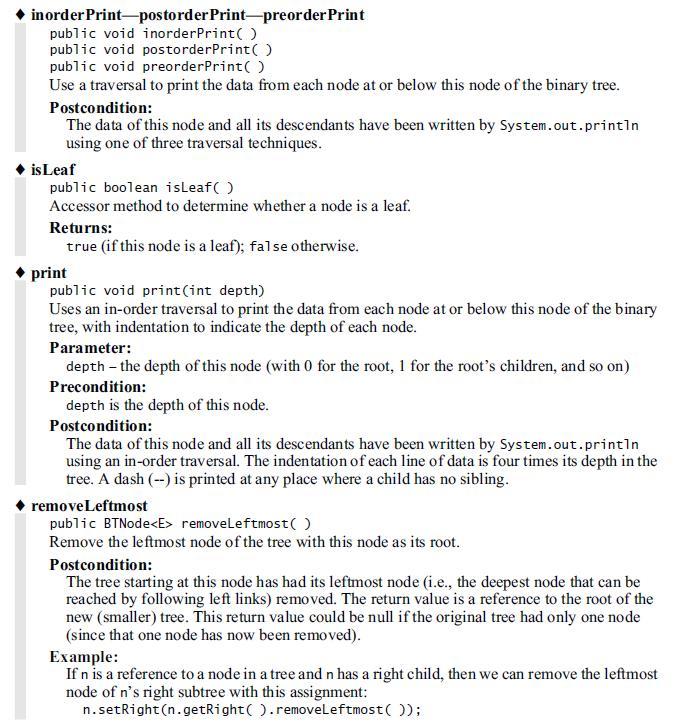
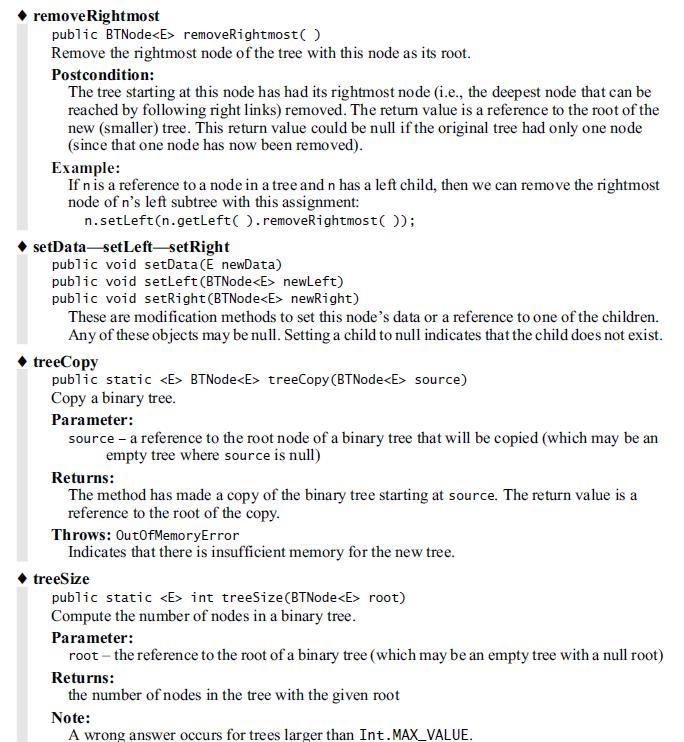
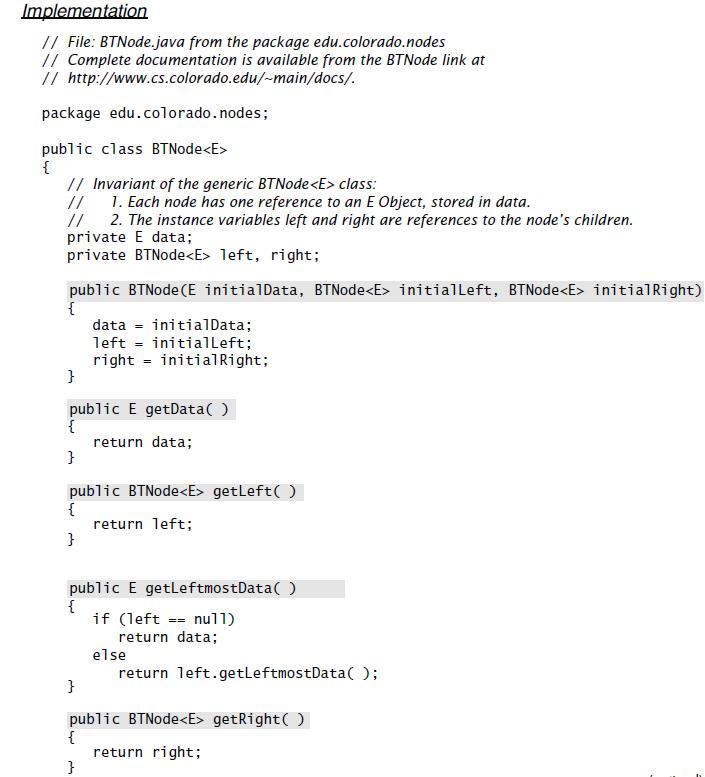
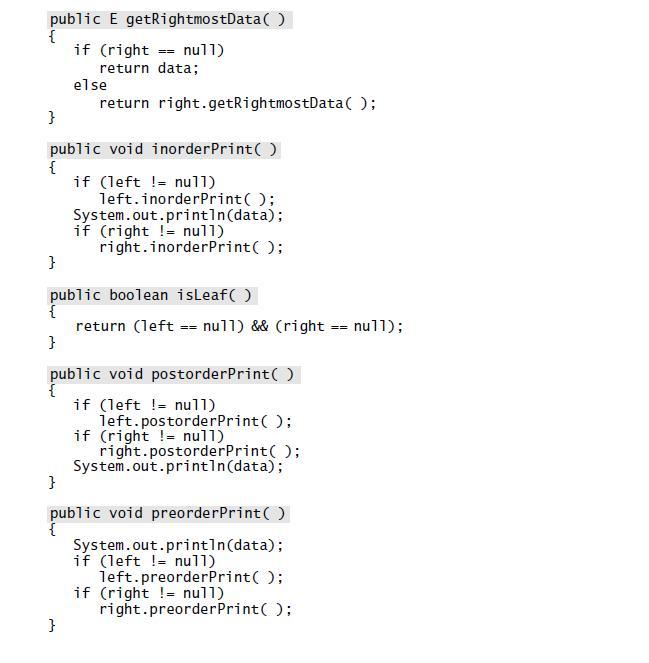
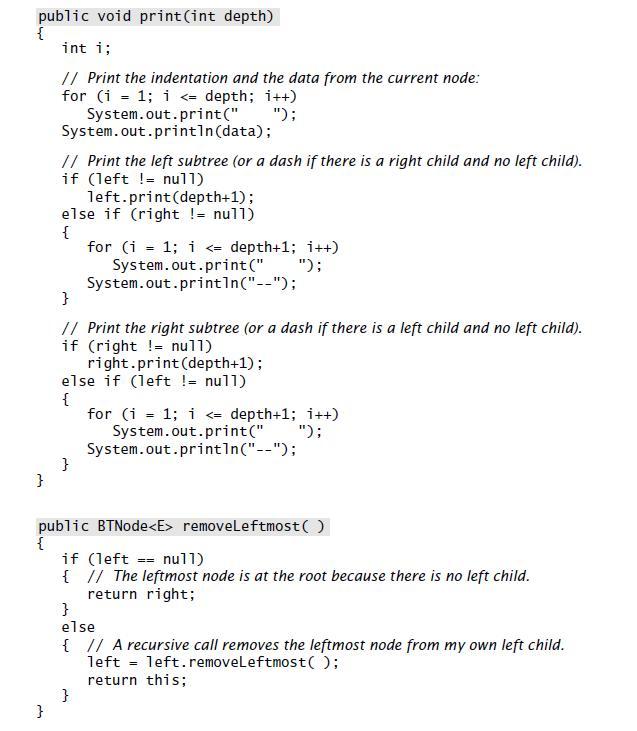
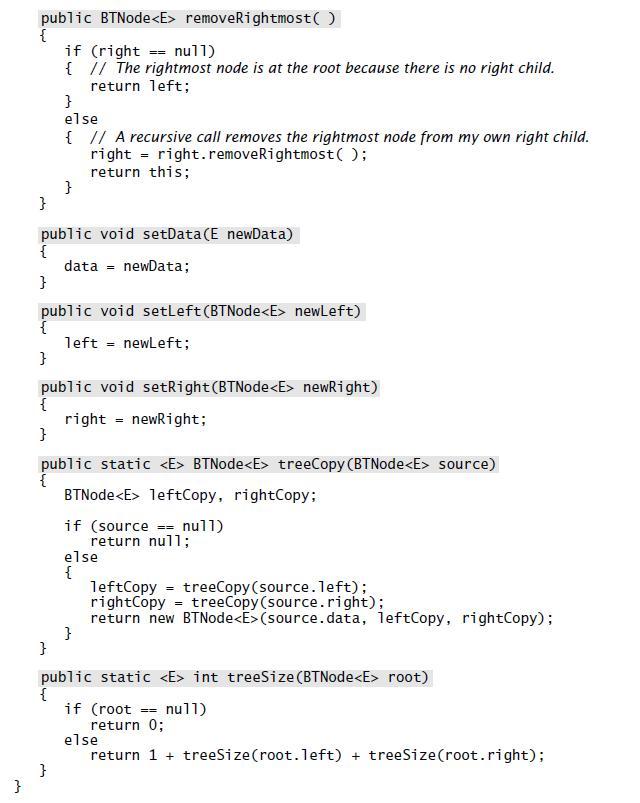
Step by Step Answer:





